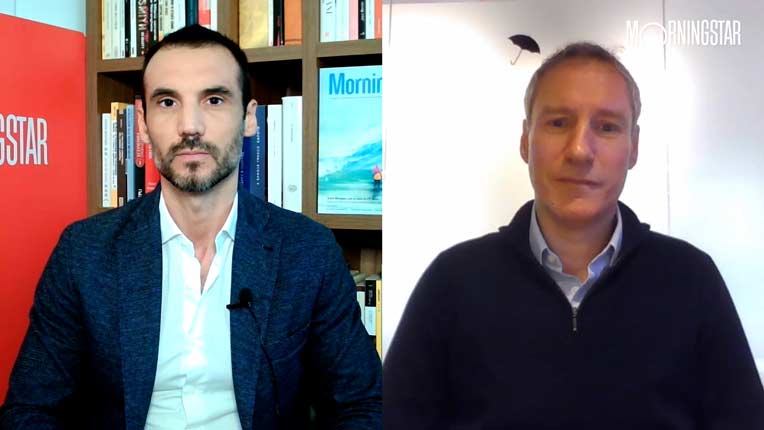Jason Stipp: I am Jason Stipp for Morningstar. The government input into gross domestic product had a negative effect for the fourth quarter, but the role of government in the economy may also be changing over the longer term. Here to offer some insights on the fourth-quarter report as well as that role of government looking ahead is Morningstar's Bob Johnson, our director of economic analysis. Thanks for joining me, Bob.
Bob Johnson: Great to be here.
Stipp: Let's talk about the fourth quarter. First, it surprised a lot of folks. On the downside it actually did show in that first read of the report contraction in the fourth quarter. Government [spending] was largely responsible. What's the story there?
Johnson: The government part was almost entirely on the federal government defence spending, and there there's a lot of difference between the way the private sector accounts for things and the government, when they write their cheques, that's when it goes on the books as an expenditure. But in the meantime, the defence contractor may have been building that rocket or that plane or that radar system over many months and had a number of employees working on those projects, and lo behold the end of the project comes or they make a progress payment and that counts as spending. And meanwhile, the factory production line kind of keeps running at the same rate through all of that, and that's why we saw that employment looked fine in the fourth quarter. It showed considerable growth. It was a nice quarter for employment growth, but the government GDP number was so negative because they actually wrote fewer cheques in that last and final quarter.
Stipp: Might you see the government contribution into GDP have more lumpiness because maybe some of the accounting practices that smooth out the numbers in the corporate world really aren't employed in the government world as you say?
Johnson: Exactly. And especially when you've got changing patterns here, with the winding down of programs, with threats of sequester, and with all sorts of timing issues on when cheques go out to contractors. All of those things have kind of messed with the numbers a little bit. Historically, government has been a yawner. It's kind of like everybody worries about the other accounts, since government really doesn't make any difference. It kind of grows about the same as the economy. So, really, we haven't had a chance to really look at some of these details a lot over time because they haven't been important to, but now they are really making a huge difference.
Stipp: Maybe some of that lumpiness is more apparent because of some other factors going on with government right now.
Johnson: Right.
Stipp: Let's talk about some different ways we can look at the role of government in the economy. The first one is the percentage of GDP. So talk a little bit about what historically government has been as a percent of the GDP calculation?
Johnson: Yes. And let's talk to the whole GDP calculation here, and that means kind of what they spend on buildings, what they lay out for employees, what they spend on defence programs. It doesn't count what we call the transfer payments: the Social Security and Medicare/Medicaid. Those are transfer payments [that are] not included in [the GDP calculation]. [The GDP calculation] only includes the direct government things, which run about 18% of GDP. That's federal, local and state for those types of direct payments, and that's a little bit lower than it's been historically, not by a lot, but it is what it is. The consumer number runs about 70%, which is why I say "Watch the consumer." The government kind of goes along with it for the ride, but right now the government is actually seeing a little bit of shrinkage for a variety of reasons.
Stipp: So, [government percentage is] less than a third of [the consumer-sector percentage level], but it's still a pretty big chunk of overall GDP. Those transfer payments, as you said, do those end up in other areas of the GDP calculation, if they're not accounted for as government spending?
Johnson: Well what happens is that it comes in as taxes and then goes out as a payment to a recipient. And so they both show in the accounts, but one cancels the other one out. But what happens is as you get more money in a consumers' hands, they can go spend on consumption, so that way it does indirectly impact the number.
Stipp: So government as a percent of the GDP calculation is a little bit lower than it has been historically. Another lens we can look at government's role in the economy is the percentage of employment. How has that been trending recently compared with historically?
Johnson: Right now we are running about 16% of employment, and that's all three levels of government, 16% of all employees work for the government. So, the trend there has been in the 1950s after we ramped down the wars and so forth, we were running around 13%. Then we had the Great Society programs, the Vietnam war, and a couple of other issues in the mid-1970s, and we got as high as 19%, almost 20%, of employment related to the government. And since then we've been kind of trending down just a little bit, and right now we're dead in the middle of that 13%-19% range where about 16% of all employment is for government.
Stipp: I want to get some of your thoughts on longer-term trends there in a moment, but another lens for the sake of discussion is that government outlay--so, again the transfer payments, the Social Security or other benefits that the government pays out. Those aren't part of the government's role in GDP calculations, but you can look at it as a percent of GDP what that spending amounts to. Where is that right now?
Johnson: Right now the spending is still very high. In 2012--this is federal only--it was about 22.5% of GDP. So, a relatively big number. The average over the last 40 years has been 21%, so we're running above that number, and even with some of the programs we've got coming forward here, it will probably remain above that long-term average. On the other hand, on the tax-collection side, we are running way below-average at kind of 15%. Now with the recent set of tax increases we'll in very short order be close to 19% of GDP from taxes and other government collections, which is above the long-term average of 18%.
Stipp: So, when you're looking ahead at where some of these trends that we've had in the shorter term may be going in the future, how do you see that split between the government contributions on some of these lenses? What might we expect to see over the next five or 10 or 15 years?
Johnson: Well, let's start with the direct one, when we talk about all three levels of government and the actual calculation of GDP, that may continue to shrink. And the reason being as more and more of the government spending is for Social Security and Medicare, it actually crowds out some of the spending on some of the other discretionary items in the budget. So, I would suspect that that number will continue to move downward.
On the other hand, skipping ahead to the third category, federal government spending including transfer payments, is likely to remain relatively high, maybe even go a little bit higher over the next five to 10 years. Part of it is because of the insurance subsidies; part of it is really because of the interest on the debt. And then especially as we get toward 2025 that number starts to move up in even a bigger way as we get Social Security and Medicare really beginning to take a bigger percentage as the baby boomers retire.
Stipp: So, my guess then is the government employment as a percentage of the employment market, given that we might see higher spending in that area, is probably going to go down, that we'll see fewer government employees because there just isn’t as much money to support that level of employment.
Johnson: Again, they are being crowded out on all levels: federal, state and local. And some technologies will enable it to happen; you won't have to stand in those long lines anymore. You can do more and more government services online; that will necessitate fewer employees. But then you've got the pure matter of economics. I mean people are kind of at a limit on what they want to spend on local taxes. And if there is only so many dollars to go around, if they have to spend more on pensions, which is increasingly happening, they're going to have to crowd out current employees. And so, I think the employment on the government level will probably continue to erode, both short term and long term.
Stipp: If we do see those trends continue, Bob, as an economist looking at the whole economy, can you say whether this is a positive trend, a negative trend? Is it better to have more government employment and maybe fewer of those transfer payments or how, do you sort of pick that apart?
Johnson: Well, there is no easy answer. I mean certainly government employment tends to be more stable. It tends not to be as volatile as say manufacturing employment and goes up and down. And it tends to be that they employ a wide scope of people with very different sets of skills. And so the government is a stabilizer, it's an employer of many types of people, and it's less volatile. So in that way, government spending isn't an all-bad thing.
On the other side of the equation, if you've got everybody working for the government, they're not working on [tablet computers, MP3 players], or other things that are economically productive, they're just helping transfer money from one pocket to another in many cases. So there [would be] less and less government spending on, say, research and development and things that really boost the economy. So, the extent that less money is spent on government and more [is spent in] the private sector, it tends to be a good thing. Having less government spending in general means lower interest rates and more money to spend on other things.
Stipp: All right, Bob, some very interesting insights on the role of government in recent economic reports and maybe even more interestingly on the potential role of government in the economy in the future. Thanks for joining me today.
Johnson: Thank you.
Stipp: For Morningstar, I am Jason Stipp. Thanks for watching.




















